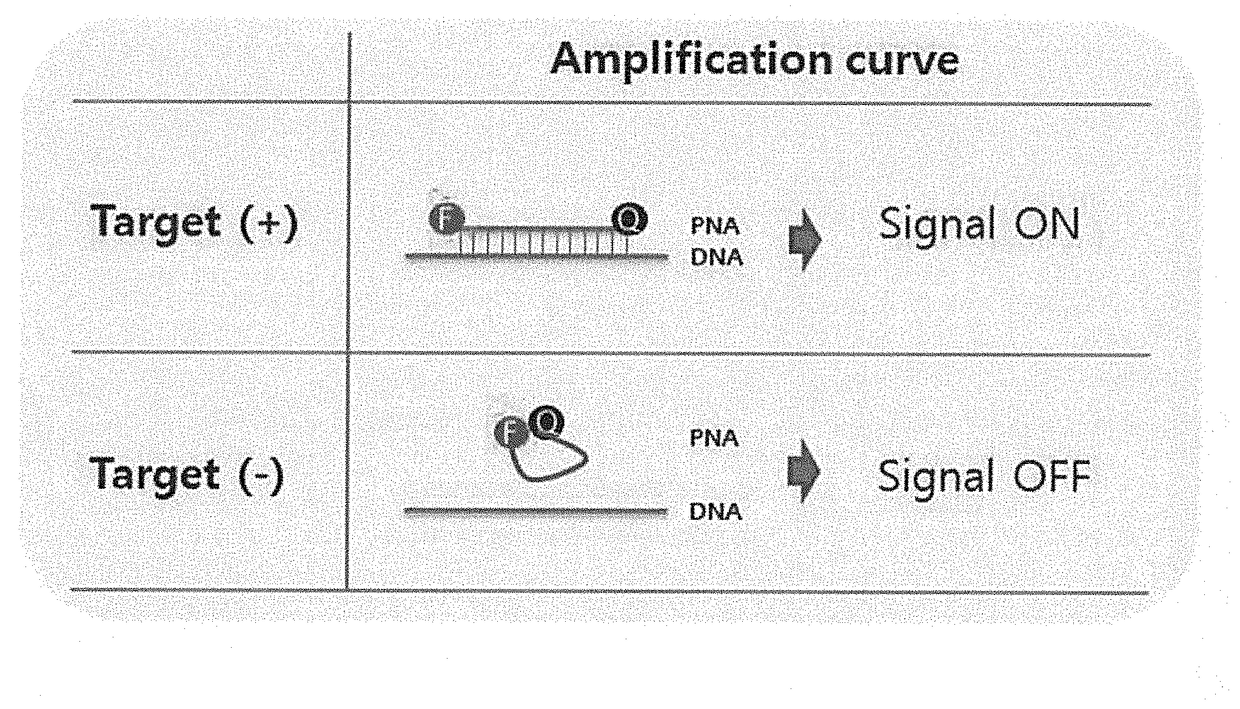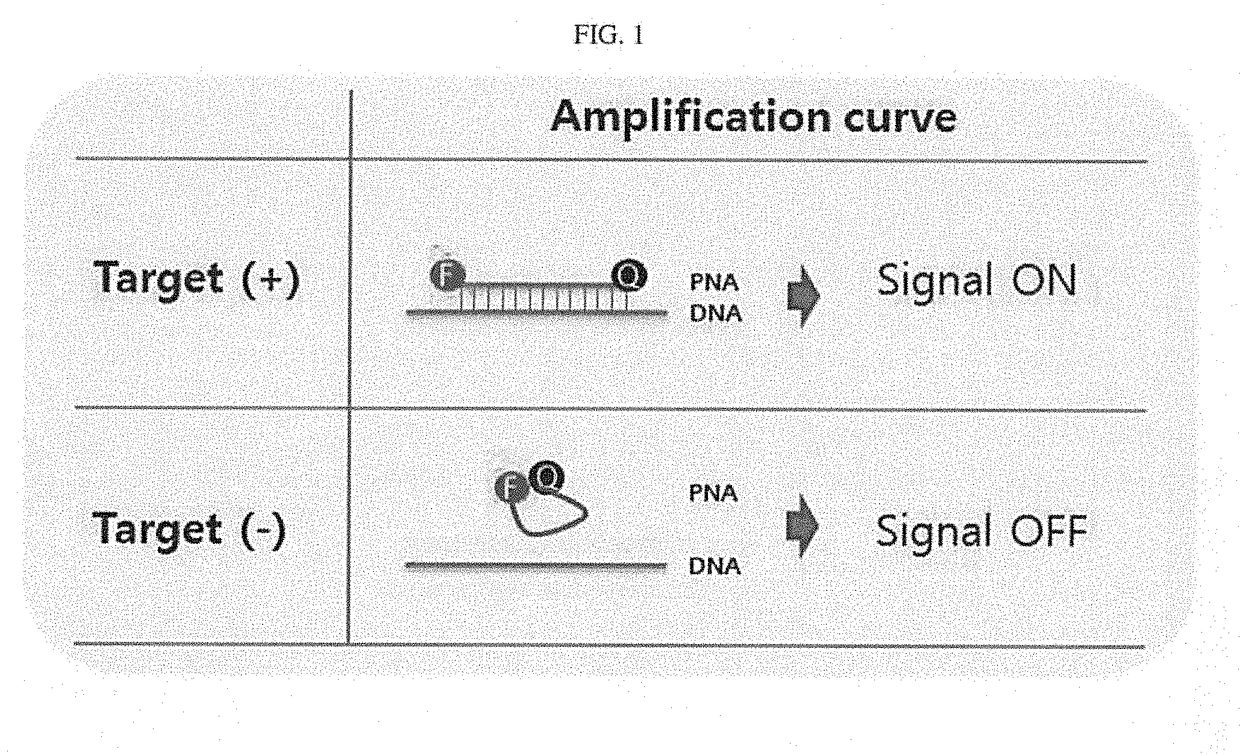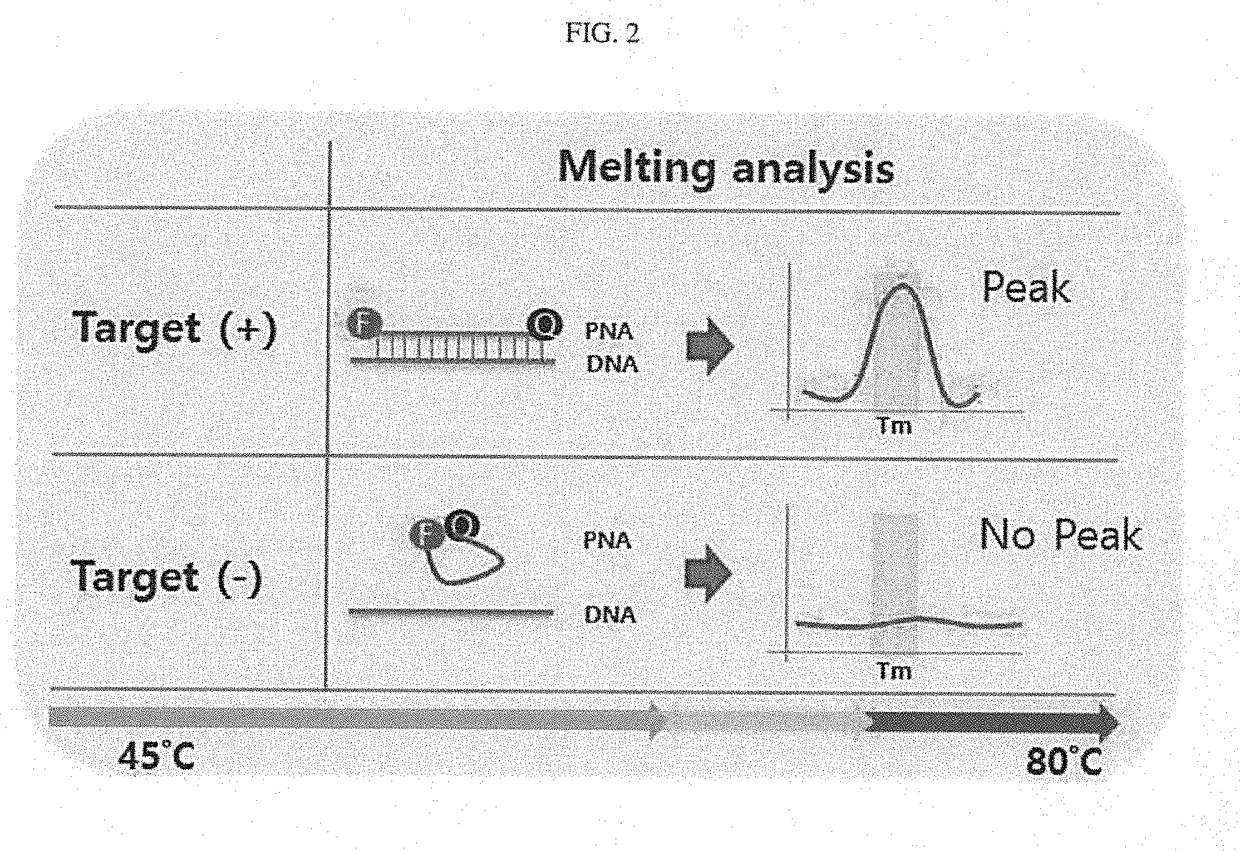Genetic marker for discriminating and detecting causative bacteria of fish edwardsiellosis and streptococcosis, and method for discriminating and detecting causative bacteria using same
a technology of edwardsiellosis and streptococcosis, which is applied in the field of gene markers for discriminating and detecting bacteria causing edwardsiellosis and streptococcosis in fish, and a method for discriminating and detecting causative bacteria using the same, can solve the problems of inability to achieve detailed classification, time-consuming and complicated procedures, and long reaction time, so as to achieve the effect of increasing the temperature of pna prob
- Summary
- Abstract
- Description
- Claims
- Application Information
AI Technical Summary
Benefits of technology
Problems solved by technology
Method used
Image
Examples
example 1
ion of Genetic Markers for Discrimination and Detection of Bacteria Causing Edwardsiellosis and Streptococcosis in Fish, and Primer Pairs and PNA Probes Specific for the Bacteria
[0067]In order to discriminate the genotypes of bacterial 16S rDNA genes in 461 bacteria strains isolated from Korean aquacultured flatfishes, among bacteria causing fish infections, 16S rDNA nucleotide sequences were obtained through Sanger sequencing, and consensus sequences corresponding to bacterial species were constructed using CLC Genomic workbench 8.0.1 and comparatively analyzed by clustal W alignment. Through genotype analysis, nucleotide sequences (SEQ ID NOs: 8 to SEQ ID NOs: 11) specific for three Streptococcus species (Streptococcus iniae, Streptococcus parauberis, Lactococcus garviae) and Edwardsiella tarda were selected as genetic markers for discrimination and detection of bacterial species.
[0068]More specifically, the single nucleotide polymorphism (SNP)-containing genetic markers of the DN...
example 2
ation of Four Bacterial Genes by Real-Time Polymerase Chain Reaction (PCR) and Melting Curve Analysis
[0076]Using the bacteria-specific genetic markers, PNA probes and primers of Example 1, amplification curves and melting curves for four bacterial DNA samples were obtained and analyzed to discriminate bacterial species.
[0077]PCR was performed using CFX96™ Real-Time system (Bio-Rad Laboratories Inc., USA) under asymmetric PCR conditions in order to produce single-stranded target nucleic acids. The asymmetric PCR conditions were as follows. 1 μM of a mixture of four PNA probes and 10 ng of bacterial DNA were added to 2×PNA qPCR PCR MasterMix (Seasun Biomaterials, Korea), 0.1 μM forward primer and 1 μM reverse primer to a total volume of 20 μL, and then real-time PCR was performed.
[0078]FIG. 3 shows real-time PCR reaction conditions for discrimination and detection of bacterial species. Specifically, FIG. 3 graphically shows a process of amplifying and hybridizing the genetic marker re...
example 3
ation and Detection of Bacterial Species Based on Melting Fluorescence and Score at Each Temperature
[0081]When bacterial species for unknown bacterial DNA samples are to be discriminated or detected using the PNA probes according to the present invention, a table listing scores at different melting temperatures as shown in Table 2 below can be previously prepared and can be used.
[0082]After melting curve analysis was performed as described in Example 2, the obtained fluorescent signal and Tm value were digitized according to the temperature at which a perfect match appeared. Specifically, the range of perfect match temperature ±2° C. is made, and when the Tm value for a unknown bacterial DNA sample is within this range, species in the bacterial sample can be identified and discriminated.
TABLE 2Fluorescent signalsPM (° C.)Species in the bacterial samplesFAM67Edwardsiella tardaHEX63Streptococcus parauberisTexasRed63Streptococcus iniaeCy563Lactococcus garvieae
PUM
| Property | Measurement | Unit |
|---|---|---|
| melting point | aaaaa | aaaaa |
| Tm | aaaaa | aaaaa |
| volume | aaaaa | aaaaa |
Abstract
Description
Claims
Application Information
 Login to View More
Login to View More - R&D
- Intellectual Property
- Life Sciences
- Materials
- Tech Scout
- Unparalleled Data Quality
- Higher Quality Content
- 60% Fewer Hallucinations
Browse by: Latest US Patents, China's latest patents, Technical Efficacy Thesaurus, Application Domain, Technology Topic, Popular Technical Reports.
© 2025 PatSnap. All rights reserved.Legal|Privacy policy|Modern Slavery Act Transparency Statement|Sitemap|About US| Contact US: help@patsnap.com



